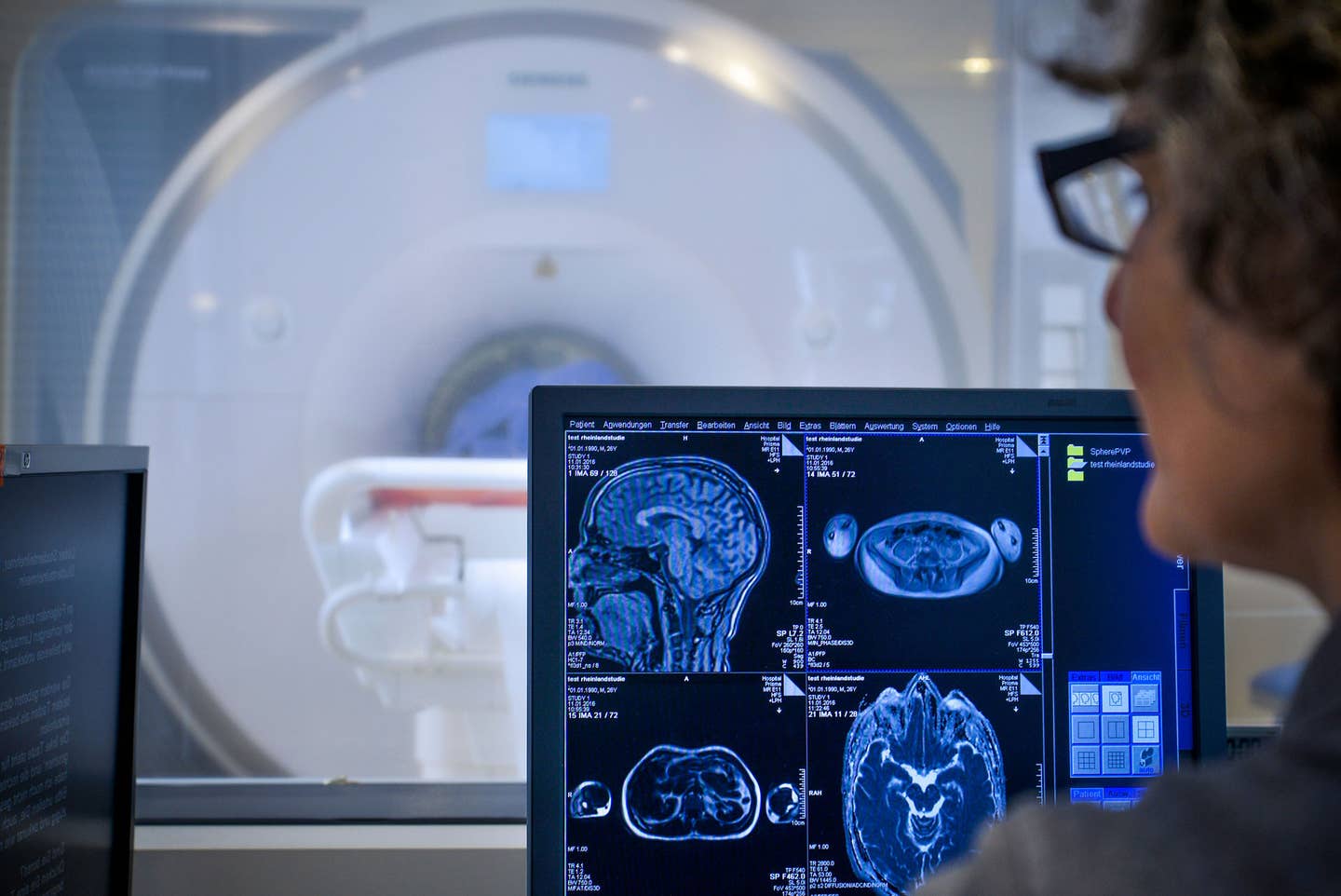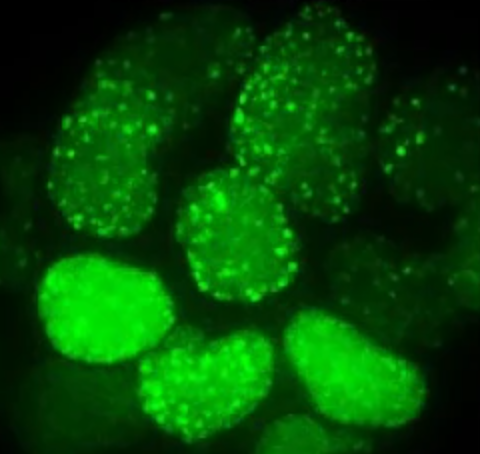Neuroscientists reveal that some parts of your brain grow stronger with age
The primary somatosensory cortex, processes every tactile signal that reaches you — from the brush of fabric to the grip of a door handle.

Researchers used ultra-high-resolution brain scans and animal studies to explore how this stacked architecture changes across a lifetime. (CREDIT: DZNE / Haagman)
Deep inside your brain, the sense of touch is handled by a strip of tissue only a few millimeters thick. This area, known as the primary somatosensory cortex, processes every tactile signal that reaches you — from the brush of fabric to the grip of a door handle. It’s organized in stacked layers, each with a distinct role, and researchers have now discovered that these layers age in surprisingly different ways.
A team from DZNE, the University of Magdeburg, and the Hertie Institute for Clinical Brain Research at the University of Tübingen used ultra-high-resolution brain scans and animal studies to explore how this stacked architecture changes across a lifetime. Their results, published in Nature Neuroscience, challenge long-held ideas about brain aging and offer a more nuanced view of sensory decline.
A new look at a familiar process
It’s long been known that the cerebral cortex — the outer layer of the brain — thins as you get older. This thinning is often linked to the loss of neurons and is assumed to mean reduced function. “This is a hallmark of aging,” explains Prof. Esther Kühn, neuroscientist at DZNE and the Hertie Institute for Clinical Brain Research. “However, little is known about how exactly the cortex actually ages. That’s why we examined the situation with high-resolution brain scans.”
Kühn and her colleagues focused on the section of cortex that handles touch, which runs across the top of the head and down toward each ear. It’s critical for guiding movement based on tactile feedback. “When I pick up a key, grasp a door handle or even walk, I constantly need haptic feedback to control my movements,” Kühn says.
Imaging layers in detail
To capture the fine structure of this area, the team used a 7-Tesla MRI scanner, which can image features the size of a grain of sand. About 60 healthy adults aged 21 to 80 participated. The researchers also studied younger, older, and senescent mice, using two-photon calcium imaging and histology for cellular-level detail.
They focused on three main cortical regions: the middle input layer (layer IV), the upper processing layers, and the deeper modulatory layers (layers V and VI). These layers differ in how much myelin they contain. Myelin, the fatty coating on nerve fibers, speeds up electrical signals and is vital for efficient communication between neurons.
Related Stories
- Cutting-edge wearable device mimics the complexity of human touch
- Human touch stimulates 16 different types of nerve cells in the body
Unexpected signs of resilience
The scans revealed a pattern that defied common expectations. Although the cortex did thin with age, not every layer lost volume. In fact, layer IV — the main gateway for tactile information — was thicker and more myelinated in older adults. This finding suggests that the pathways handling incoming sensory signals can remain strong, or even strengthen, with age.
The upper layers, which refine and integrate these signals, also held up well. These layers are involved in fine control between neighboring sensory regions — for example, coordinating finger movements when typing or playing an instrument. The constant use of these skills may help preserve their structure over decades.
“The middle and upper layers of the cortex are most directly exposed to external stimuli,” says Kühn. “The brain preserves what is used intensively. That’s a feature of neuroplasticity.”
The vulnerable deeper layers
The deeper layers told a different story. These regions handle modulation — adjusting signal strength depending on focus and context. For example, if you wear a ring, you eventually stop noticing its pressure until you think about it again.
In older adults, these deeper layers were thinner than in younger participants. Such changes could make it harder to filter distractions or focus on specific sensations. This might explain why older people often struggle more with tasks like reading in noisy environments.
Yet even here, the picture wasn’t entirely negative. Myelin content in these deep layers increased with age, both in humans and in mice. In the animal studies, the rise in myelin was linked to more parvalbumin-expressing neurons, which help sharpen sensory signals. This suggests the brain may partially compensate for lost volume by boosting certain cell types.
Clues from lifelong adaptation
One participant, aged 52, offered a striking example of how personal history shapes the cortex. Born without one arm, he had relied entirely on the other for daily tasks. In his scans, the middle layer of the cortex linked to the missing arm’s sensory area was thinner, likely due to decades of underuse.
Such findings reinforce the idea that stimulation — or the lack of it — drives structural changes over time. “Sensorimotor skills that are repeatedly practiced can remain stable for a long time,” Kühn notes. “But if there are interfering stimuli, older people usually find such activities particularly difficult. This could be because the deep layers’ functionality has declined.”
Linking structure to function
The research tested several hypotheses about aging and cortical architecture. One model predicted no structural difference between younger and older adults. Another suggested that layer IV would change most, becoming thicker or thinner with age. A third expected deep layers to degrade, reducing the balance between excitation and inhibition in sensory processing. The final model predicted that fine borders within layer IV, tied to precise sensory maps, would blur with age.
The results supported parts of multiple models. The input layer indeed grew thicker in older adults, while the deep layers thinned but gained myelin. Sensory-evoked neuronal activity increased with age in mice, along with parvalbumin expression — possible evidence of an internal balancing act. Across species, middle and deep layers showed particular sensitivity to aging.
A more hopeful outlook on aging
Kühn believes these findings point to an encouraging message: the brain remains adaptable. “I think it’s an optimistic notion that we can influence our aging process to a certain degree,” she says. Activities that challenge the senses and motor skills — from learning an instrument to practicing a craft — may help preserve the layers that support them.
The study also highlights the importance of looking beyond overall brain volume. Subtle layer-specific changes could explain why some abilities fade while others stay sharp, and why targeted interventions might work for one skill but not another.
Past Studies and Findings
Previous research has shown that the cerebral cortex thins with age, often linked to neuron loss. This thinning is typically assumed to mean reduced function. However, earlier work on the primary motor cortex found that its layered structure could remain intact in older adults.
Studies on sensory decline have linked it to changes in receptive field size, decreased lateral inhibition, and overactivation in certain brain regions. Other work has suggested that layer IV in sensory cortices is sensitive to the amount of sensory input it receives, which can change with both age and peripheral nerve deterioration.
Animal studies have also indicated that deep cortical layers mediate inhibitory control of sensory inputs. In primates, reduced inhibition in these layers has been tied to aging, potentially affecting attention and sensory filtering.
Practical Implications of the Research
Understanding how different cortical layers age could lead to more targeted therapies for sensory decline. Instead of broadly aiming to “boost brain function,” interventions could focus on preserving deep layer modulation or strengthening the input layer.
This approach may help older adults maintain skills that depend on precise sensory feedback, such as playing an instrument or using tools. It could also inform rehabilitation after injury, tailoring exercises to stimulate specific cortical layers.
The evidence of compensatory myelin growth offers another avenue for research: identifying ways to promote or extend this natural adaptation before it fades in very old age.
For the public, the findings reinforce the value of lifelong learning and sensory engagement. Activities that challenge touch, coordination, and attention may help preserve the very brain layers that make these abilities possible.
Note: The article above provided above by The Brighter Side of News.
Like these kind of feel good stories? Get The Brighter Side of News' newsletter.



